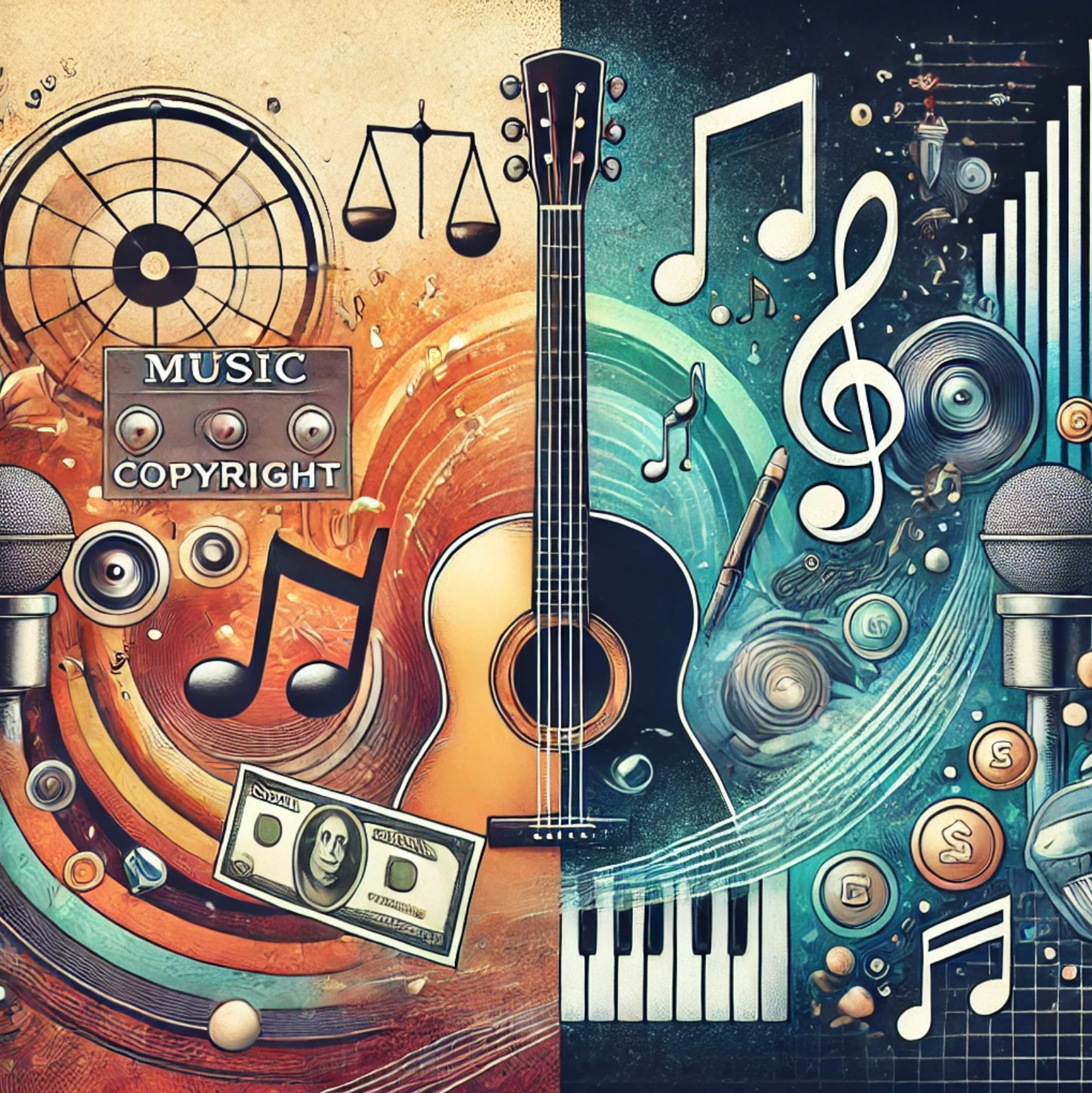Introduction
In the music industry, copyright plays a crucial role in protecting the intellectual property of artists and ensuring they receive fair compensation for their work. Copyright law governs how music can be used and distributed, and it directly influences how musicians, songwriters, and producers get paid through royalties. This article explores the intricacies of music copyright, the relationship between copyright and royalties, and the distinctions between music publishing and copyright.
What is Music Copyright?
Music copyright is a legal framework that grants the creator of original music exclusive rights to its use and distribution. These rights include:
- Reproduction: The right to make copies of the music.
- Distribution: The right to sell or distribute copies to the public.
- Public Performance: The right to perform the music publicly.
- Derivative Works: The right to create new works based on the original music.
- Public Display: Although less relevant to music, this includes the right to display the work publicly.
Types of Music Copyright
- Musical Composition Copyright: Protects the music and lyrics as written by the songwriter or composer. It is usually managed by music publishers.
- Sound Recording Copyright: Protects the specific recording of the performance of the composition. It is typically owned by the recording artist or the record label.
How Copyright Relates to Royalties
Royalties are payments made to rights holders for the use of their copyrighted work. There are several types of royalties in the music industry:
- Mechanical Royalties: These are earned when music is reproduced physically (e.g., CDs, vinyl) or digitally (e.g., downloads, streaming). Mechanical royalties are paid to songwriters and publishers whenever their composition is reproduced.
- Performance Royalties: These are earned when music is performed publicly, whether live, on the radio, in a restaurant, or streamed online. Performance rights organizations (PROs) like ASCAP, BMI, and SESAC collect these royalties on behalf of songwriters and publishers.
- Synchronization (Sync) Royalties: These are earned when music is used in sync with visual media, such as movies, TV shows, advertisements, or video games. Sync royalties are negotiated directly with the music copyright holders and can be significant.
- Print Music Royalties: These are earned from the sale of sheet music. This royalty is typically less significant but still provides revenue for composers and publishers.
Publishing vs. Copyright in Music
While copyright and publishing are closely related, they are not the same thing. Understanding the distinction is crucial for anyone navigating the music industry.
Music Copyright: Refers to the legal rights that are granted to the creator of the music. It covers the ownership and control of the music, including the rights to reproduce, distribute, perform, and create derivative works.
Music Publishing: Refers to the business of managing and promoting music copyrights. A music publisher’s role includes:
- Administration: Handling the registration of copyrights, licensing, and royalty collection.
- Promotion: Actively seeking opportunities for the music to be used commercially, such as in movies, TV shows, and advertisements.
- Creative Support: Providing resources and support for songwriters to create new music.
When a songwriter signs a publishing deal, they often transfer a portion of their copyright ownership to the publisher in exchange for these services. The publisher then helps maximize the earnings from the song through various channels.
How Royalties are Collected and Paid
- PROs (Performance Rights Organizations): These organizations, such as ASCAP, BMI, and SESAC in the U.S., collect performance royalties on behalf of songwriters and publishers. They monitor public performances of music and distribute royalties to registered members.
- Mechanical Rights Organizations: Organizations like The Harry Fox Agency in the U.S. handle the collection of mechanical royalties from the reproduction of music.
- Direct Licensing: For synchronization and some digital uses, licenses are often negotiated directly with the copyright holders or their representatives.
- Digital Aggregators: Companies like TuneCore, DistroKid, and CD Baby distribute music to digital platforms and collect royalties on behalf of artists.
Why It Matters
Understanding copyright in music is essential for protecting intellectual property and ensuring fair compensation through royalties. The distinction between publishing and copyright is also crucial, as it delineates the roles and responsibilities in managing and promoting music. By navigating the complexities of copyright law and royalty collection, musicians and songwriters can better control their creative output and secure their financial future in the industry.

